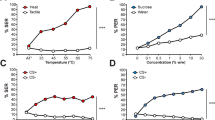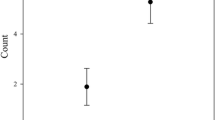Abstract
Bees derived from artificially selected high- and low-pollen-hoarding strains were tested for their proboscis extension reflex response to water and varying sucrose concentrations. High-strain bees had a lower response threshold to sucrose than low-strain bees among pre-foragers, foragers, queens and drones. Pre-foraging low-strain workers showed ontogenetic changes in their response threshold to sucrose which was inversely related to age. High-strain foragers were more likely to return with loads of water compared to low-strain foragers. Whereas low-strain foragers were more likely to return with loads of nectar. Low-strain nectar foragers collected nectar with significantly higher sucrose concentrations than did the high-strain nectar foragers. Alternatively, low-strain foragers were more likely to return empty compared to high-strain foragers. These studies demonstrate how a genotypically varied sensory-physiological process, the perception of sucrose, are associated with a division of labor for foraging.
Similar content being viewed by others
Author information
Authors and Affiliations
Additional information
Accepted: 27 October 1998
Rights and permissions
About this article
Cite this article
Pankiw, T., Page Jr., R. The effect of genotype, age, sex, and caste on response thresholds to sucrose and foraging behavior of honey bees (Apis mellifera L.). J Comp Physiol A 185, 207–213 (1999). https://doi.org/10.1007/s003590050379
Issue Date:
DOI: https://doi.org/10.1007/s003590050379




